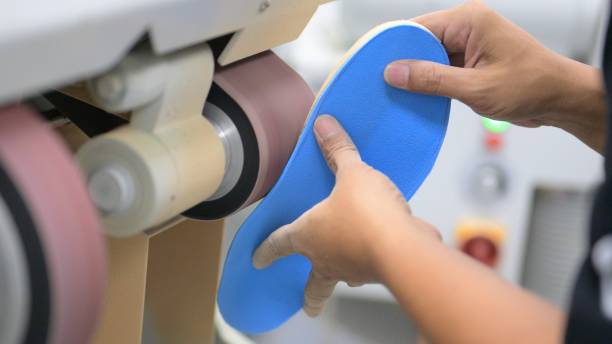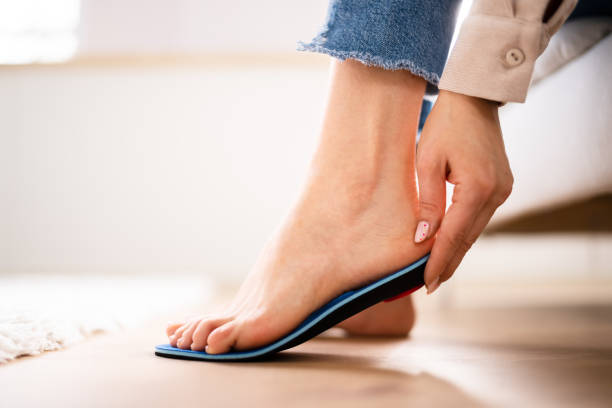If over-the-counter foot and ankle inserts don’t provide the relief you need, a podiatrist may recommend custom orthotics. These high-quality shoe inserts help alleviate pain by controlling abnormal motion and reducing stress on specific areas of the lower limbs.
Orthotics often recommended for conditions like flat feet, hammertoes, and severe heel pain caused by overpronation. They can also offer comfort and stability to individuals with high arches.

How They Work
Orthotics Perth help the foot and ankle function more efficiently, reducing the stresses placed on muscles and joints. There are several types of Orthotics; a soft orthotic can absorb shock, improve balance and take pressure off uncomfortable or sore areas, while a semi-rigid orthotic combines both soft and rigid components. These are often used for sports or runners and they help to guide the foot through proper biomechanical functions.
A custom made orthotic is designed based on a detailed biomechanical examination which may include an analysis of your medical history, lifestyle and observance of your feet and ankles while you stand and walk. Depending on your problem, the doctor may suggest a few different options. For example, a person with a plantar fasciitis may benefit from arch supports that are soft and flexible, while someone with a flat foot would require an orthotic that is more rigid and supportive.
Some people may have a break in period where the orthotics feel strange or even cause discomfort for a few days as they adjust to the new support. This is normal and should resolve over time. It is important to wear the orthotics for at least an hour each day, gradually increasing this as the body becomes accustomed to them. In addition, it is important to avoid high impact activities until the feet are fully adapted.
What to Expect
Depending on your foot type and condition, the orthotics will take time to break in. This process usually takes 2-6 weeks, and may involve slight discomfort in other parts of your body such as your knees or hips. This is normal and should subside as the muscles in your feet and legs become accustomed to the new positioning.
When worn correctly, a good pair of custom orthotics will alleviate pain and not increase it. If the orthotics are causing pain, it is important to let us know so that we can find the reason why you are experiencing this. Typically, this is because the orthotics do not fit the shoe you are wearing them in well or the material is too stiff/firm.
Premade orthotics are designed to fit the average foot and do not provide the specific support a person with an individual foot type needs. They are often cheaper than a custom pair, but can cause a variety of problems including heel pain, increased stress in other areas of the foot and ankle, as well as other problems such as back, hip or knee pain.
When the orthotics are breaking in, it is important to start off slowly by wearing them for only one hour per day. Then gradually increase this time each day until you are able to wear them all day without any discomfort or issues. It is also important to be sure that you are wearing them with the proper shoes, which will help the orthotics to work properly and alleviate pain.

Getting Started
A custom-made orthotic is a shoe insert designed to provide support and correction for the feet. Foot or ankle pain is often a sign of other health problems such as arthritis or diabetes and can be successfully treated with orthotics. In one small-scale study, people with rheumatoid arthritis who wore custom-designed orthotics had less foot and ankle pain as well as improved walking function.
Premade or over-the-counter orthotics are mass-produced to fit the “average” foot and often do more harm than good. For example, they may promote supination (inversion) in the foot by adding extra pressure on the outside of the heel and forefoot. This can lead to increased pain and stress on other parts of the body such as the knees, hips, or lower back.
When first wearing your new orthotics, it is normal to experience some discomfort. This is due to the fact that your muscles will need to adjust to their new position. It is best to begin with short periods of wear and gradually increase this time as your feet get used to the change.
It is recommended that you start with 1 hour on the first day and slowly add an additional hour of wear each day until you are comfortably able to wear your orthotics all day for everyday use. After this, you can then gradually introduce them for sports and strenuous work activities.
Maintenance
Most people have an opinion about orthotics before they walk in the door. It may be based on personal experience, what friends or family have told them or what they have read on the internet. Most of the time these opinions are either negative or positive.
Premade orthotics, which are mass-produced to fit the average foot, often do not correctly contour to the individual’s feet and may cause more pain than they relieve. The extra pressure on the feet from these off-the-shelf orthotics can lead to foot, heel or arch problems and other orthopedic conditions.
If your doctor recommends orthotics, a thorough physical exam is the first step. Your doctor will take a complete medical history and ask you about your symptoms, when they started and what makes them better or worse. He or she will also do a careful physical exam, checking the alignment of your feet and ankles.
If your doctor determines that you would benefit from orthotics, he or she will prescribe the type that is right for you. A soft orthotic is made of cushioning materials and can absorb shock, improve balance and take pressure off uncomfortable or sore areas. Rigid orthotics are designed to control motion, improve stability and provide support for a misaligned foot. Semi-rigid orthotics are the most common and combine soft and rigid features. They are effective for athletes who need to have dynamic balance in their feet during sports, such as running and basketball.